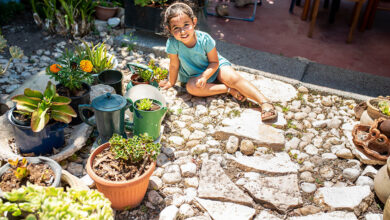
How to Start With Vermicomposting
(vermi- /ˈvəːmi/ , relating to a worm or worms, especially parasitic ones)
Composting has been revolutionized in modern society and you don’t even need a big yard anymore in order to start!
You can easily turn your kitchen scraps into a good heap of compost with a vermicomposting system. This is a method that works just as well as traditional composting methods and it is easy for folks who don’t have much space to work with.
If you are keen to start your own garden, here is an easy, quick and comprehensive guide on how to start with vermicomposting and how it can give your garden life:
What is vermicomposting?
Vermicomposting is a method in which you put vegetable matter and kitchen scraps in an enclosed bin and fill it up with worms.
These worms, called red wrigglers, will then digest the waste and turn it into worm castings!
This is then called vermicompost – a rich brown material that makes excellent fertilizer for plants and will help your garden grow, even if you don’t have green fingers.
How does vermicomposting work?
Vermicomposting is very easy to set up and it only takes four simple steps:
(1) Select the right type of worms
Ordinary garden worms will not work for vermicomposting.
You need to get hold of red wrigglers, also known as Eisinia Fetida. These worms can be ordered online or through your local garden supply shop.
Your bin would require about half a kilogram of red wrigglers, but usually you can buy a vermicomposting kit that already has the needed amount of worms for you to start.
The ready-made kits have multiple stacking trays, which makes it so much easier for you to remove the final product. If you are not investing in a ready-made kit, consider building one that is similar so that the process is easier.
(2) Get enclosed worm bin
The worms then need to be kept in an enclosed bin that is between 20 and 30 centimetres deep and should be made out of an opaque material to keep out the light.
Furthermore, the bin should have a tight fit and holes for ventilation. Again, if you opt or the ready-made kit, the bin should be up to standard.
Alternatively, you can build one out of wood or convert a plastic bin. The bin should be kept indoors or in a spot with room temperatures. Temperatures between 15°C and 25°C should be fine.
(3) Create a worm bedding
The worm bedding can be made up of a combination of dry leaves, shredded paper, straw, sawdust, coconut fibre, or finished compost.
Before you add the bedding, soak it in water and wring it out so that it has the same moisture as a damp sponge. Fluff it up as you place it in the bin.
As soon as the bin is about half-full, mix in a handful of plain dirt.
(4) Provide vegetable matter
The last step would be to feed the worms: they can eat nearly any kind of vegetable waste like vegetable scraps, fruit peels, coffee grounds, tea bags, and moistened bread.
Food like meat, fish, dairy products, bones, greasy fruits and citrus peels should be avoided as they cannot eat those.
Also, try to avoid smelly foods that might make the bin smell bad.
Each time you add food, cover it with 5cm of bedding and wait for the worms to consume it before adding more!
Venticompost bins take up to 6 months before producing finished compost.
To harvest, dump out the contents onto a plastic sheet, remove the castings and reassemble the bin with fresh bedding.
An easier way is to add food to one side of the bin so that the worms stay there and scoop out the compost without disassembling the bin completely.
Composting with worms is an easy and affordable way to recycle your vegetable & fruit scraps and make sure that your garden grows healthy!
If you’ve enjoyed this article, why not share it across your social media platforms, so others can benefit from it as well? Feel free to REPIN the image below:







